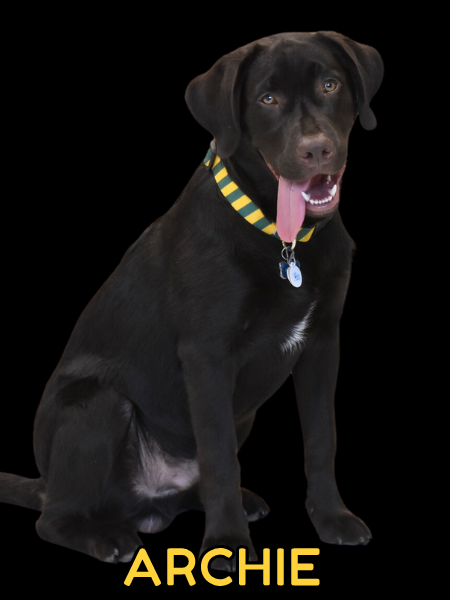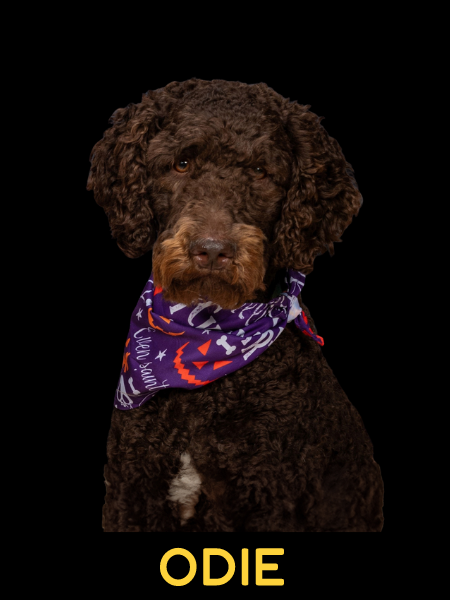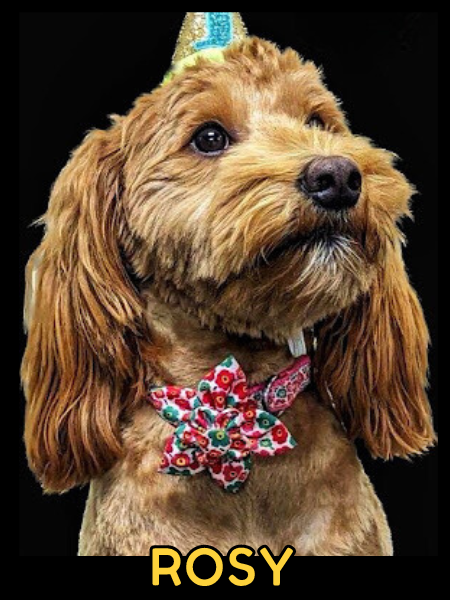RCS Facility Dog Program
Background and Research
According to a study published by the National Institutes of Health (NIH), having a dog present in the classroom promotes a positive mood and provides significant anti-stress effects on the body. Therapy dogs also provide a ‘connection’ with students that allows them to become more than an occasional friend or visitor to the classroom. The study also indicates the connection between interacting with animals and its impact on improving social interaction.
The RCS Board of Education approved a Therapy Dog Policy in early 2020, and in 2021 the district began to gather interest from staff for the creation of a Facility Dog program. Volunteer members of our staff from across the district have received specialized training to act as owners or handlers of our district's Facility Dogs.
As always, we put the welfare of our students and staff at the forefront of all we do. We will always be kind and respectful to everyone in our community. If you have any questions or concerns, including allergies or a fear of dogs, please contact your student’s building principal. Any concerns you have for your student will be treated with privacy and respect. As a reminder, when a new dog is set to begin at any of our schools, families, and staff members will be notified and provided with more information.
About the program
What’s a Facility Dog? A Facility Dog is a highly trained therapy dog who will spend its entire day in our school buildings.
All RCS Facility Dogs will need to pass two tests when they are about one and a half years old: the Canine Good Citizenship test and a Therapy Dog test.
Some of the key behavioral ingredients for a successful Facility Dog are calmness, patience, an eagerness to be social, and comfort with being touched. Our Facility Dogs will always be on a leash when walking around our schools with a handler.
To ensure this program and a dog's long-term success, it is very important that we all follow these training rules:
When you see the dog with an adult:
Stay calm and quiet
If you want to pet the dog, walk up to the handler (an arm’s length away) and ask permission.
Say, “May I pet them?” Wait for the handler to get the dog ready.
Pet the dog's body, and avoid their face area (touch its back gently).
Only one person may pet the dog at a time so they do not get scared or over-excited.
Keep your body calm.
Help the dog learn good manners by:
Never being super silly, laughing, or loud (especially if the dog is over-excited).
Never let the dog lick you.
Never encourage them to jump or go after something.
Never encourage a dog to run down the hall towards you.
Never play tug games with a toy.
Never trying to pull something from their mouth.
People First: We follow a philosophy of people first. Adults and students with allergies or dog fears will always be respected. If you do not want the dog near you, just let the handler in charge of the dog know and they will be immediately removed.
Cues: A cue is a word the dog will understand and respond to, like “sit”, “down”, “come”, “wait” or “go say hello”. Our dogs will not only need to have good manners but will need to learn many cues. They will be going to “dog school” to learn these cues but they will need a lot of practice to remember them. As they become familiar with our schools, you may be asked to help them practice these cues.
Our dogs will love being in our schools and around people. As such, they will thrive on attention and positive reinforcement. When they are not demonstrating their best behavior, we can let them know by turning your back and walking away. If they are pulling on the leash, barking, crying, trying to jump, or if the handler tells you to, turn your back and walk away. This is an important part of their training so that they understand that their best behavior will give them the best petting and affection from us.
Hugging and Licking: We do not want our dogs to become overwhelmed so we ask that you do not hug the dog right now. We want you to pet them! Petting them gently on their chest or with one hand gently on their body is best. We want them to feel safe. These rules may change as our dogs get older.
Some people are allergic to dog saliva. Our dogs need to get into the habit of not licking. To prevent this we ask everyone to keep out of the dog’s face. You can simply stand so the dog cannot lick your face. If they do start to lick, you can withdraw attention by moving away. Even if you don’t mind being licked, please keep in mind that this is the rule for the dog, and please help us by not allowing them to lick you.
Together we will train amazing facility dogs!
Meet the Facility Dogs



